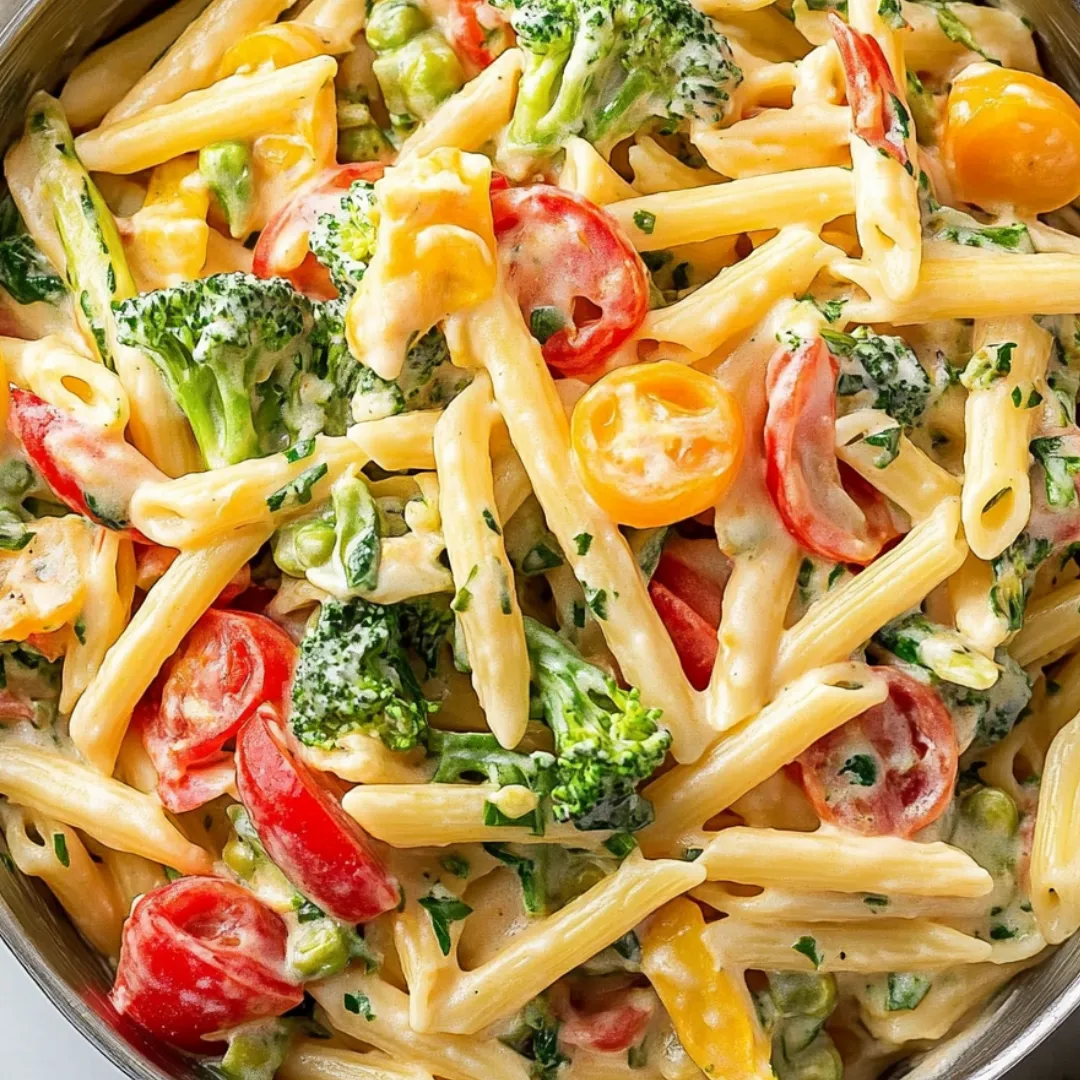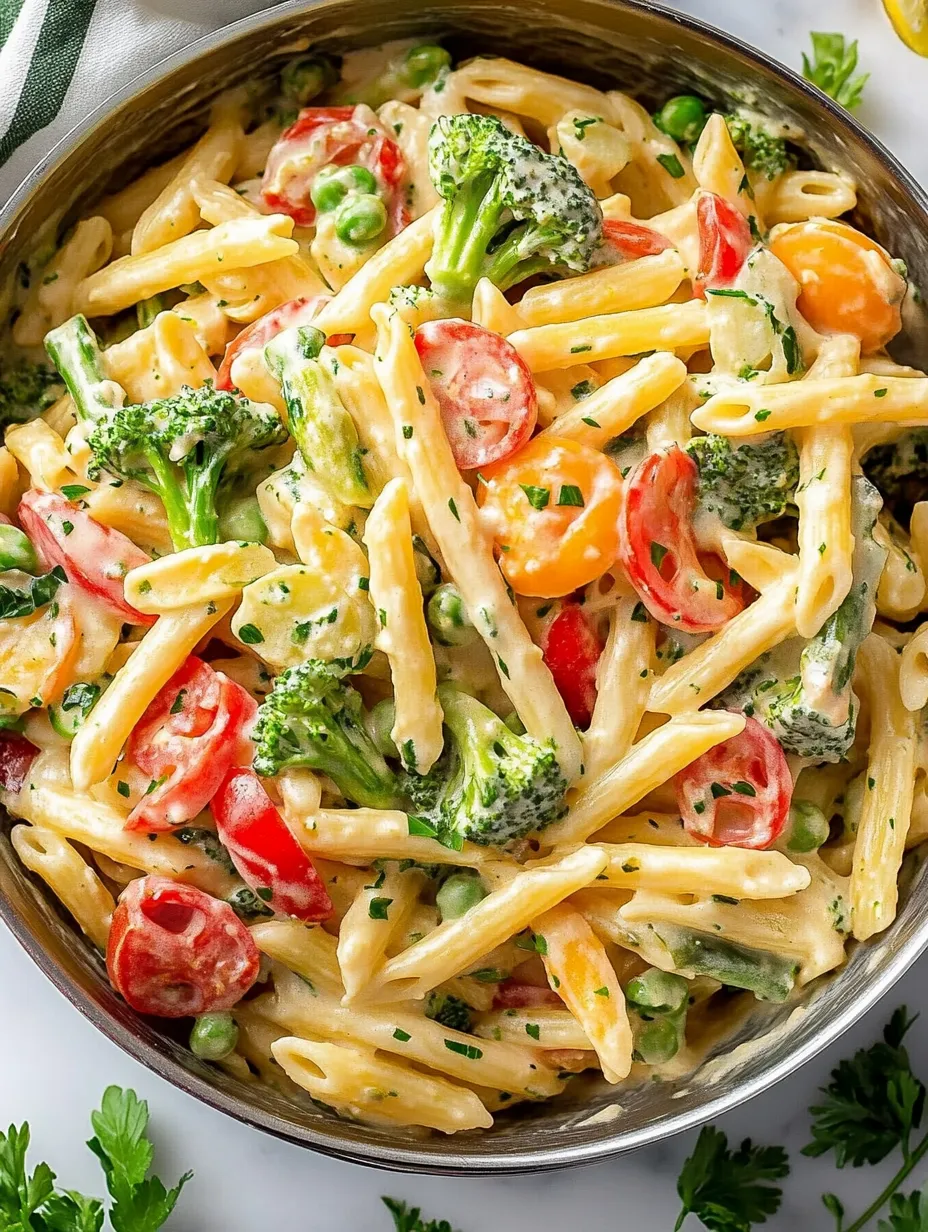 Save Pin
Save Pin
This pasta primavera is one of those cheerful, lively dinners everyone wants to share. You've got loads of pasta covered in a velvety herb sauce and packed with whatever fresh veggies you can find. It's my favorite when I want to show off my garden haul or just get my family chatting over plates loaded with creamy, colorful noodles.
This was a regular request in my house after my kid insisted on more veggies during pasta night. Even my partner asks for seconds now and swears it’s as good as what we order at our local Italian place.
Inviting Ingredients
- Lemon juice: brightens every bite, making flavors pop
- Ziti or penne or bowties: the perfect pasta shapes to grab all that sauce
- Parmesan, freshly grated: this is key for nutty, melty magic—use a block if you can
- Flour: thickens your sauce up nicely without weighing it down
- Garlic: brings all the cozy smells and adds real depth
- Butter: makes your sauce glossy and thick
- Salt and cracked black pepper: ties every flavor together
- Peas, tomatoes, zucchini, red onion, broccoli, bell pepper, carrots: get the brightest stuff from the produce bins—they’re the stars in every bite
- Olive oil: this helps veggies caramelize and pick up even more flavor
- Red pepper flakes: adds a gentle hit of heat
- Dried basil, parsley, oregano, and dry mustard: bring loads of herby punch
- Soy and hot sauce: flavors get deeper and more interesting but not overwhelming
- Chicken bouillon: one small bit really boosts the savory taste
- Half and half: you want this silky richness without heaviness
- Chicken broth: adds layered, cozy flavor to the whole thing
Easy Steps to Make It
- Serve it Up:
- Scoop everything into bowls and top with more black pepper and maybe a splash of lemon. Eat right away while it’s warm and creamy.
- Mix It All Together:
- Add your pasta into the pan, then pour back in all the cooked veggies. Give it a good toss so the sauce covers everything. Taste and tweak seasoning if you want.
- Lemon and Cheese Rainbow:
- Turn down the heat, slowly add parmesan while you keep stirring. As soon as it’s melted and smooth, drizzle in the lemon juice to brighten things up.
- Smooth Out the Sauce:
- Pour the sauce mix in little by little, whisking really well each time so you avoid lumps. Crank the heat up till it just barely bubbles, then drop to a gentle simmer. You’re looking for a sauce that’s rich but still moves easily.
- Make the Roux:
- Drop your butter in the same pan over medium, toss in the garlic, and let it smell amazing for about 30 seconds. Sprinkle on flour and don’t stop whisking for a full two minutes—this is how you get a thick, smooth sauce.
- Add Softer Veggies:
- Now throw in zucchini, peas, and those cherry tomatoes. Season with some salt and pepper and stir for just two or three minutes. You want those veggies crisp and bold, then set aside so they stay bright.
- Sauté First Round Veggies:
- Warm up olive oil in a big skillet over medium-high. When it shimmers, dump in broccoli, carrots, red onion, and bell pepper. Sauté for three minutes, letting them brown a little around the edges but not cook all the way.
- Boil Your Pasta:
- Salt your pasta water like the sea, bring it to a good boil, and drop in your noodles. Cook until just tender, then drain, but don’t rinse.
- Prep the Sauce Base:
- Stir together your broth, half and half, crumbled bouillon, soy and hot sauce, plus those dried herbs in a big measuring jug. Set it aside for later.
 Save Pin
Save Pin
Real parmesan is where the magic happens—I remember making it for my parents and grating cheese for them right at the table. Dad said it tasted better than what you'd get at any fancy place in town.
Keeping It Fresh
Stash leftovers in an airtight box in the fridge—they’re good for up to three days. Want to freeze? Split into single–serving portions and tuck them in the freezer for about three months. Microwave on a gentler power level or use a double boiler on the stove to keep the sauce from splitting when you’re ready to eat again.
Swaps That Work
Trade out veggies for what you’ve got—mushrooms, green beans, spinach, or asparagus work great. Go vegetarian by grabbing veggie broth and making sure your parmesan fits the bill. Skipping the dairy? Use a creamy plant-based option and vegan cheese.
Fun Ways to Serve
This dish holds up as the main event paired with a crisp green salad. Grab some crusty bread for all that extra sauce. It also works for parties—double the batch for a crowd and it’ll be a hit at any potluck.
 Save Pin
Save Pin
Where Pasta Primavera Came From
Pasta primavera got famous back in the 70s when American-Italian cooks wanted to show off spring veggies. The name means spring pasta, but honestly, you can throw in your favorite greens no matter the season.
Common Recipe Questions
- → What vegetables work best in this dish?
Classic picks are broccoli, zucchini, peas, carrots, cherry tomatoes, and red bell pepper. Got mushrooms, cauliflower, asparagus, squash, or spinach? Toss them in! Go by what’s tasty or in season.
- → Can I make this vegetarian?
Totally! Just use veggie broth in place of chicken broth, and make sure you’re grabbing a parm that’s actually vegetarian.
- → What pasta shapes can I use?
Penne and ziti always work, but farfalle or fusilli are fun too. Twist or bowtie shapes help scoop up the sauce.
- → How do I keep the sauce silky?
Keep things on low heat while you stir in lemon and parm at the end so everything stays smooth and creamy. Cranking up the heat can mess up the texture.
- → How should I reheat leftovers?
Warm it gently on low in the microwave or pop it in a makeshift double boiler on the stove. Slow heat keeps the sauce nice and creamy.
- → Can I adjust the vegetable quantities?
For sure. Change up the amounts or swap in whatever veggies are hanging out in your fridge for an easy personal twist.
